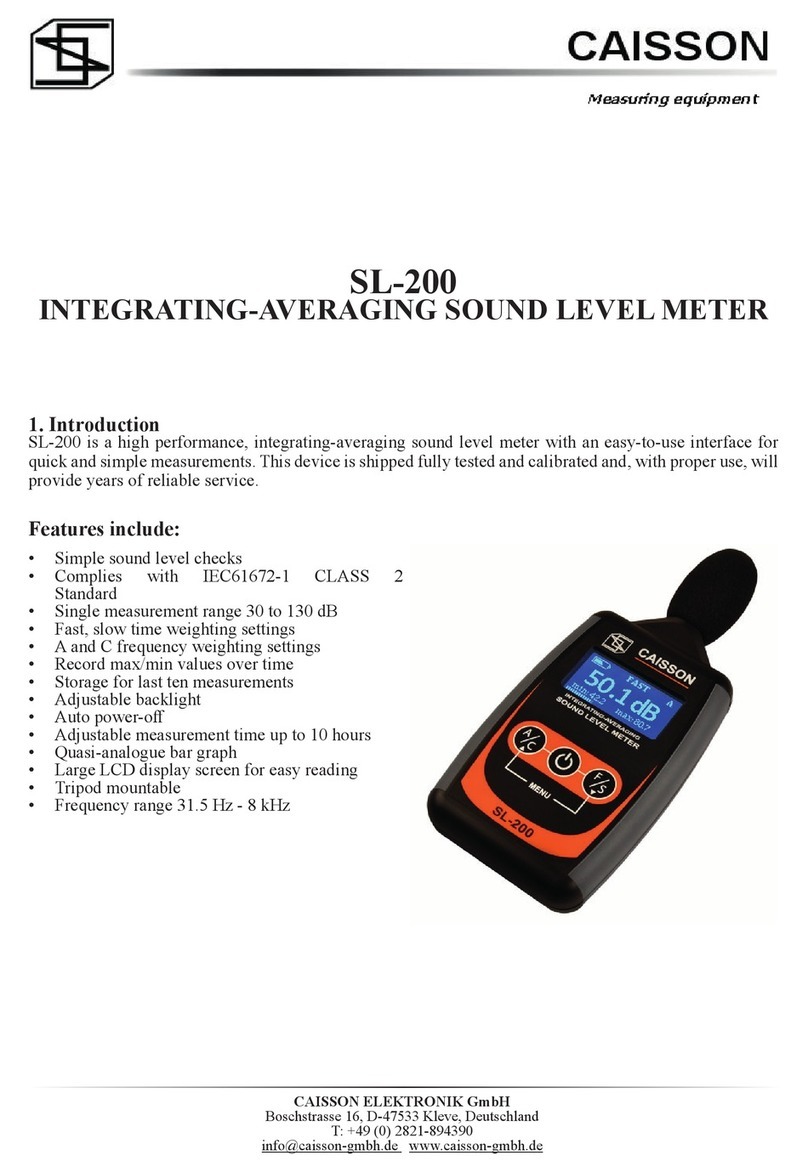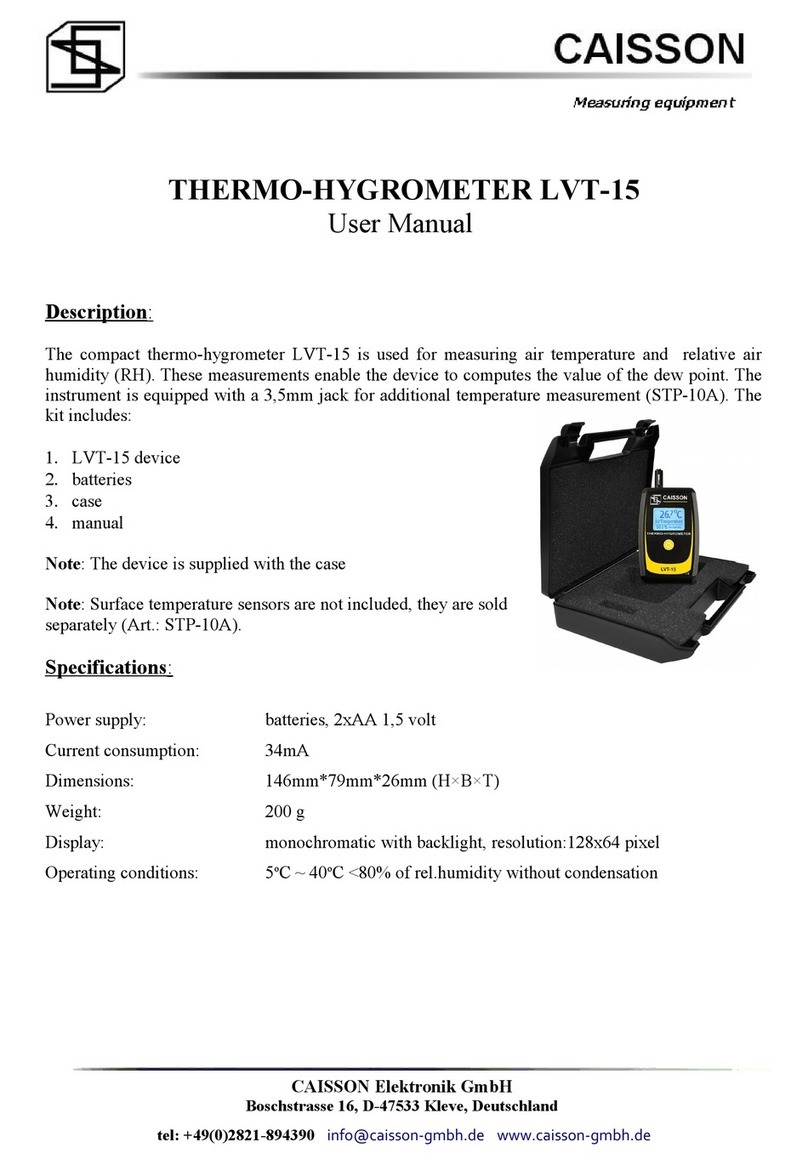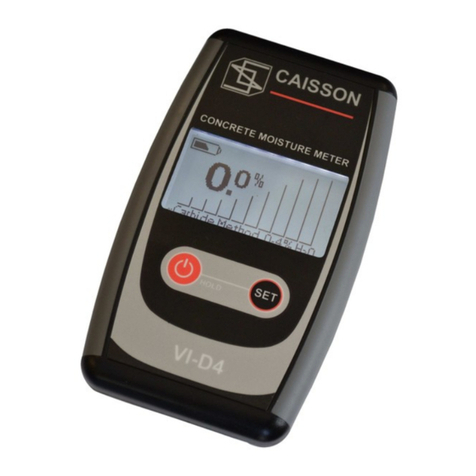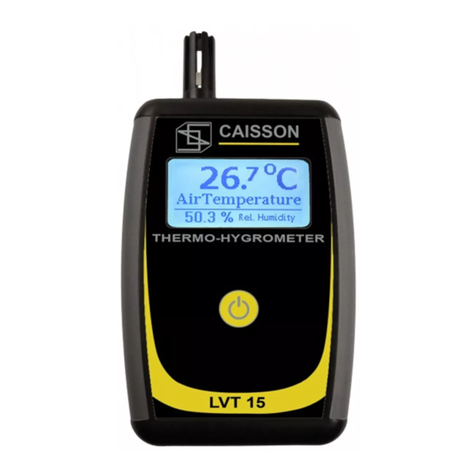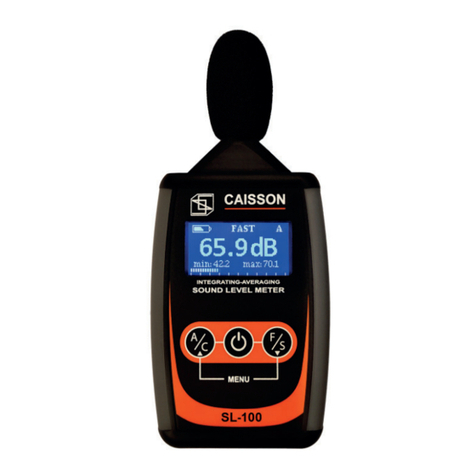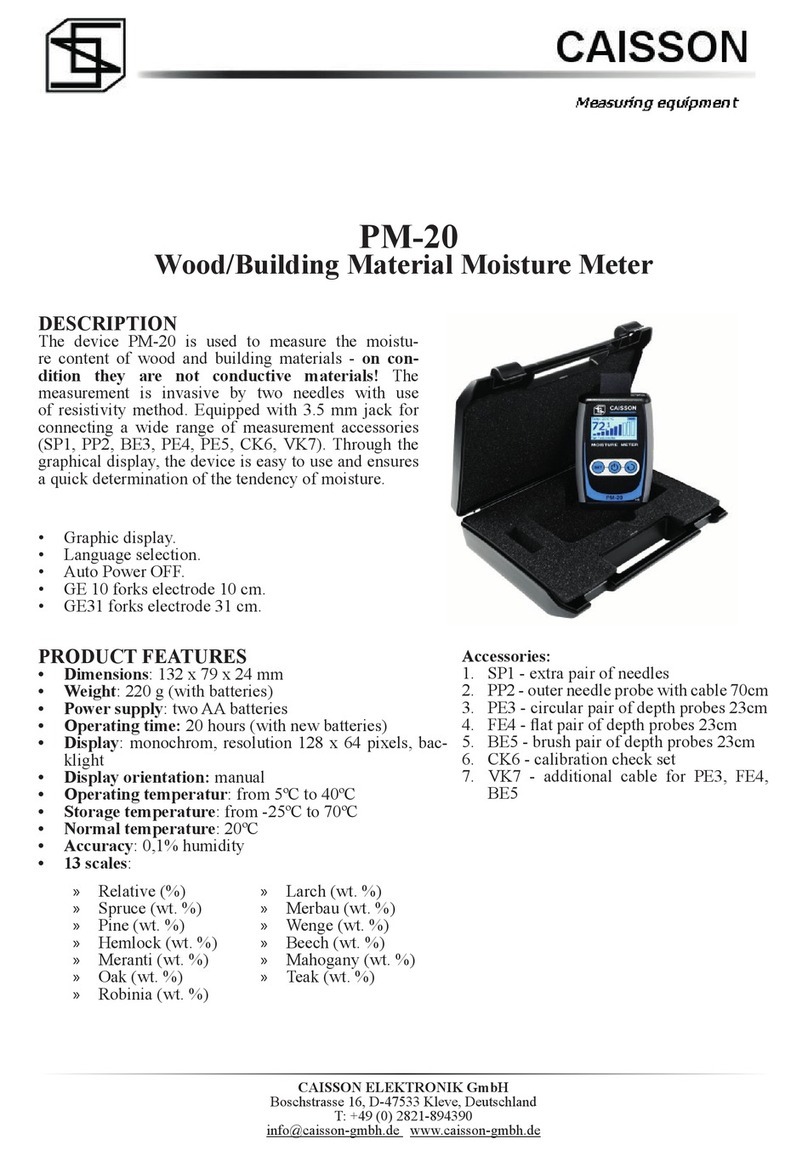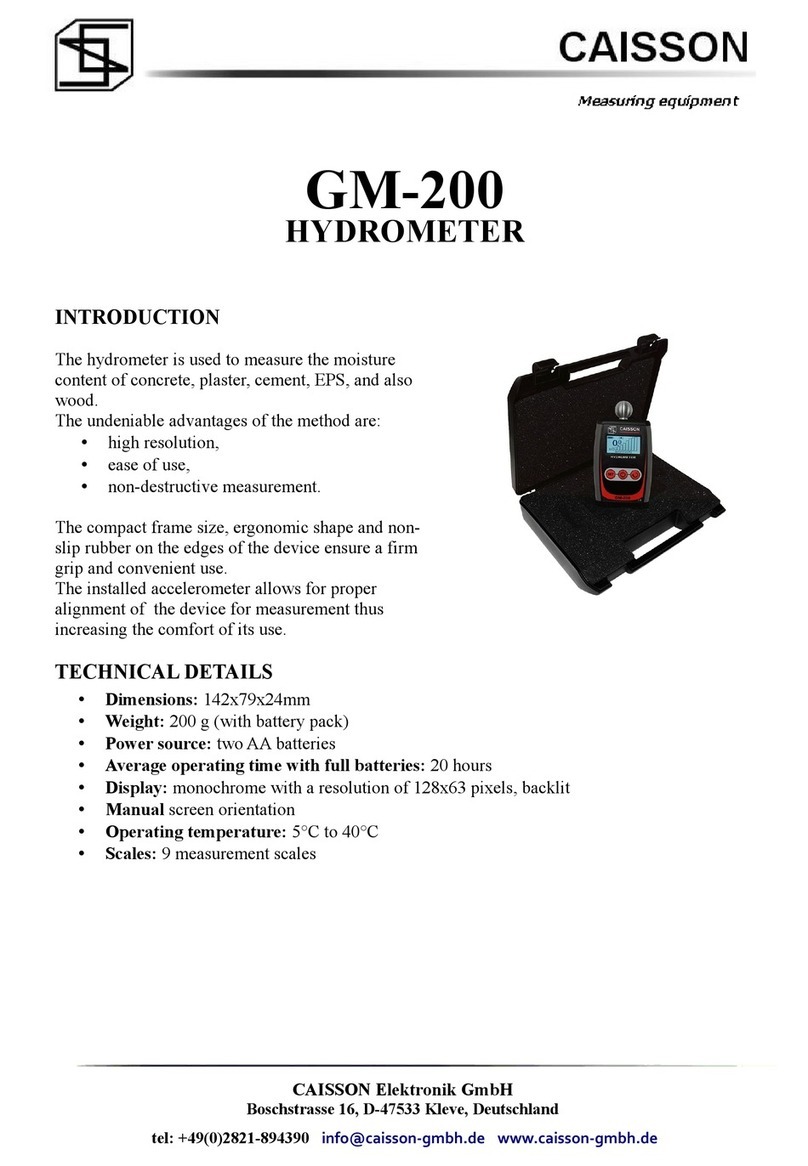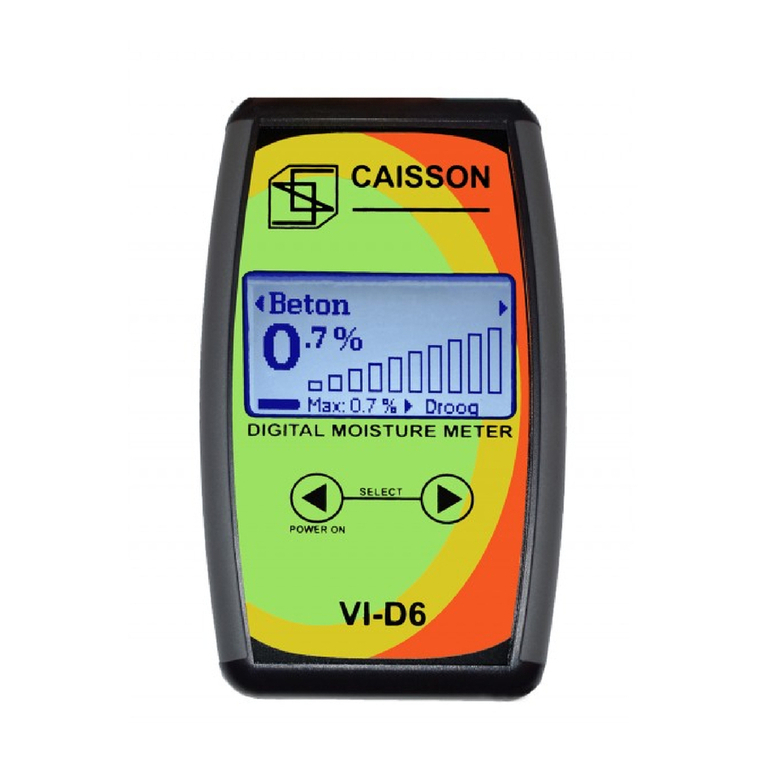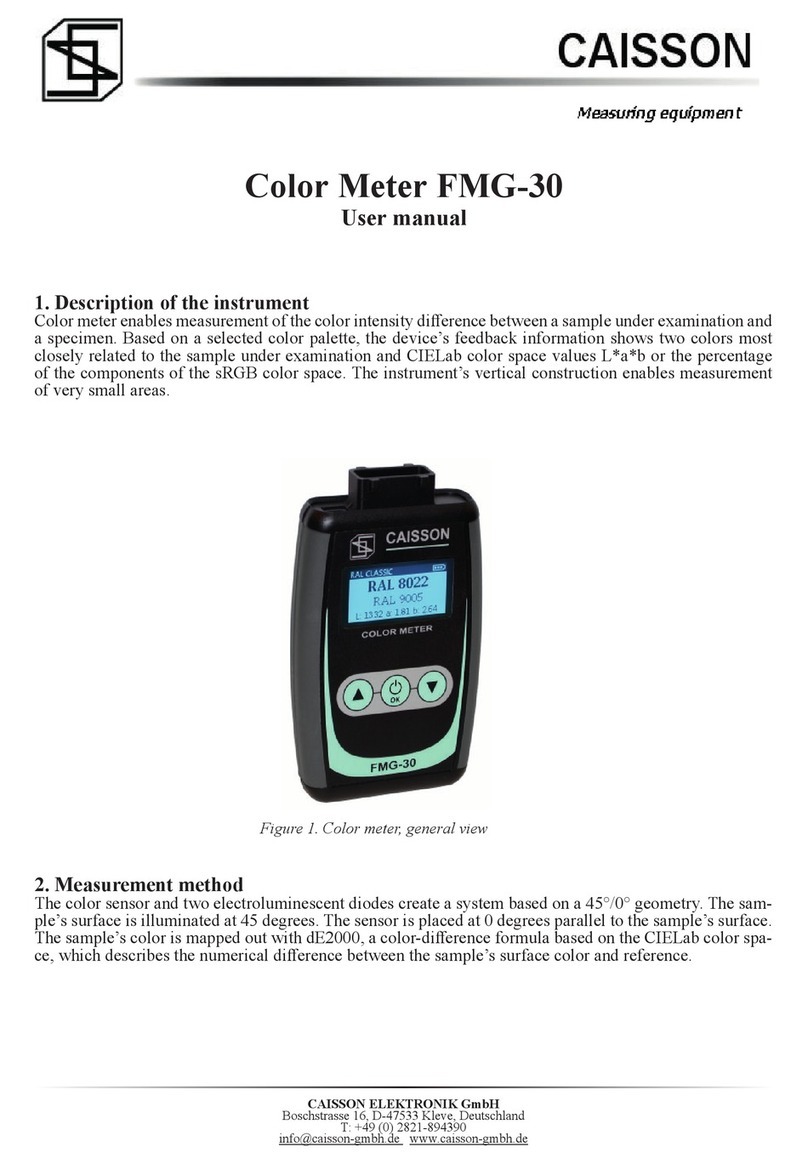o turn the instrument off at any time, press and hold down for 3 seconds , and then
release the button.
he colorimeter turns off automatically after 3 minutes of not being used.
If the battery charge is too low, an icon will pop up showing a discharged battery and the
instrument will turn off. he battery must be replaced.
12. Maintenance and service
Paint Checker is designed and constructed to provide many years of reliable operation. However, if
a fault occurs that impairs the instrument's correct functioning, then remove the batteries to prevent
the risk of further damage.
For more information about preventing faults or damage to your Paint Checker, please read the
Instrument Care section below.
Warranty
Notwithstanding the statutory warranty claims, CAISSON provides a warranty in accordance with
the laws of the Customer's country for a period of at least two years from the date of sale of the
instrument to the end user. he warranty covers only those faults which are caused by defects in
material or workmanship. A warranty claim must be accompanied by a proof of purchase with the
date of sale specified. Warranty repairs shall only be performed by an authorized distributor of
CAISSON. he following are excluded from the warranty:
Use of force, damage caused by external factors or foreign bodies such as sand or water;
Damage caused by failure to comply with the instructions for use;
Normal wear and tear.
he warranty does not cover instruments that are partially or entirely disassembled
Instrument Care
Protect the instrument from impact. Do not drop it or subject it to rough handling.
ransport it in the supplied carrying case.
Do not immerse the instrument in liquids.
Do not look directly at the measuring optics when the instrument is turned on.
Never mix fresh and partially-used batteries.
Protect the instrument from water, dust, extreme temperatures, high humidity and direct
sunlight during storage and use.
For long-term storage, remove the batteries. Do not leave exhausted batteries in the
instrument, as they may leak and cause damage.
If the instrument casing becomes dirty, then wipe it with a lightly dampened cloth. Do not
use abrasive cleaners and solvents. Do not allow moisture to enter connectors, sensor or
casing.
13. Power su ly
he Paint Checker is powered by two AA batteries. You may use either disposable or rechargeable
batteries. he battery status indicates the battery charge level. If an empty battery icon is displayed,
CAISSON Elektronik GmbH
Boschstrasse 16, D-47533 Kleve, Deutschland
